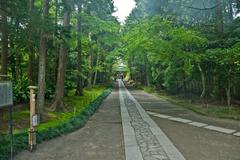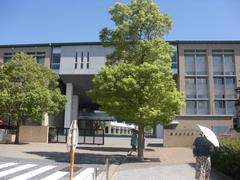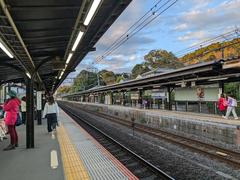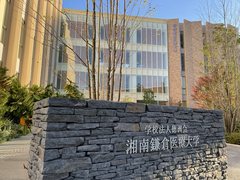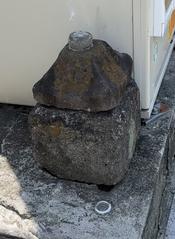
Tōshō-Ji Kamakura Visiting Hours, Tickets, and Historical Significance Guide
Date: 04/07/2025
Introduction to Tōshō-Ji Kamakura
Tōshō-Ji (東勝寺) stands as a testament to Kamakura’s profound history, blending medieval heritage, Buddhist spirituality, and samurai culture. Founded in the early 13th century as the Hōjō clan’s family temple, Tōshō-Ji was pivotal during the Kamakura Shogunate. Although destroyed in 1333, its memorial site continues to draw visitors seeking to explore Japan’s rich historical and religious tapestry (justaboutjapan.com, KCP International). The temple’s later rebuilding under the Muromachi and early Edo periods transformed it into a key Tendai Buddhist site, notable for sacred statues, ritual practices, and its enduring cultural presence (kamakuraguide.com).
This guide offers a comprehensive overview of Tōshō-Ji’s layered history, visitor details (hours, ticketing, accessibility), and contextualizes the temple within Kamakura’s broader spiritual landscape. Whether you are a history enthusiast, spiritual seeker, or cultural traveler, Tōshō-Ji promises a memorable journey through Japan’s past and present. For the latest information, consult official tourism resources (jw-webmagazine.com, japanactivity.com).
Table of Contents
- Historical Background of Tōshō-Ji
- Visiting Tōshō-Ji: Key Information
- Nearby Attractions
- Spiritual and Cultural Significance
- Practical Visitor Guide
- Frequently Asked Questions (FAQ)
- Conclusion
- References
Historical Background of Tōshō-Ji
Origins and Political Role
Tōshō-Ji was established in the early 13th century as the bodaiji (family temple) of the Hōjō, the regents who wielded power during the Kamakura Shogunate. As a Rinzai Zen temple situated near the Hōjō residences, it reflected the clan’s embrace of Zen Buddhism and their efforts to legitimize political authority through spiritual patronage (justaboutjapan.com). The temple hosted major ancestral rites and became a focal point within Kamakura’s network of significant temples.
The Fall of the Hōjō Clan
In 1333, with the collapse of the Kamakura Shogunate, Tōshō-Ji became the site of a dramatic mass seppuku: Hōjō Takatoki and hundreds of retainers ended their lives in the temple’s precincts during the siege led by Nitta Yoshisada (KCP International). The temple was destroyed amid the ensuing devastation, marking the end of the Hōjō’s rule and the Kamakura era.
Subsequent centuries saw Tōshō-Ji rebuilt under the Muromachi and Edo shogunates, assuming new roles in Buddhist ordination and as a spiritual memorial.
Visiting Tōshō-Ji: Key Information
Public Access and Visiting Hours
- Memorial Site: The original Tōshō-Ji temple no longer exists; the site is marked by a memorial and historical signage. There is no entrance fee, and the site is open to the public during daylight hours (typically 8:00 AM–5:00 PM).
- Active Temple (Rebuilt Site): The current Tendai Buddhist temple, sometimes referred to as Hokai-ji (on the former Tōshō-Ji grounds), is open daily from 8:30 AM to 4:30 PM (last admission 4:00 PM), closed December 29–January 3. Admission is generally 300 yen for adults, with possible discounts for children and seniors (kamakuraguide.com).
Directions and Accessibility
- Location: Near Kamegayatsu district, Kamakura, a short walk from Kamakura Station (JR Yokosuka Line, Enoden Line). The memorial is about 10–15 minutes on foot from the station.
- Access: Paths are uneven and may be challenging for those with mobility issues; the active temple grounds are mostly accessible with some limitations. Contact the temple office for assistance if needed.
Best Times to Visit
- Seasonal Highlights: Visit during spring (cherry blossoms) or autumn (red foliage) for the most scenic experience. Early mornings and weekdays are quieter (jw-webmagazine.com).
- Weather Considerations: Summer can be hot and humid; June–July is rainy.
Nearby Attractions
Enhance your visit with these Kamakura landmarks:
- Tsurugaoka Hachiman-gū: Kamakura’s main Shinto shrine.
- Engaku-ji and Kenchō-ji: Historic Zen temples with active communities.
- Komachi Street: Shopping and local cuisine.
- Great Buddha (Kamakura Daibutsu) and Hase-dera: Iconic cultural sites nearby.
Guided tours often combine these locations for a comprehensive Kamakura experience (japanactivity.com).
Spiritual and Cultural Significance
Sacred Statues and Ritual Practices
- Kosodate Kyodoku Jizo Bosatsu: The temple’s principal deity, a guardian of childrearing, sculpted in the late 14th century and designated an Important Cultural Property.
- Other Deities: Bishamonten (victory), Juntei Kannon (compassion), Enma Daio (afterlife), and Daisho Kangisojin Tenno (hidden Buddha), each with unique roles and ritual significance (kamakuraguide.com).
- Rituals: Visitors can participate in sutra-copying (shakyo), draw omikuji (fortune slips), and collect pilgrimage stamps (goshuin). Sutra-copying requires a 1,000 yen donation and is unavailable during New Year’s holidays.
Seasonal Events and Community Role
Tōshō-Ji is known as the “Temple of White Bush Clover,” with spectacular hagi blooms in September, cherry blossoms in spring, and camellias in winter. Annual festivals and community gatherings foster continuity of tradition (kamakuraguide.com).
Practical Visitor Guide
Admission, Facilities, and Etiquette
- Tickets: Purchase on-site; generally 200–500 yen.
- Facilities: Clean restrooms, a small shop with temple charms, and vending machines. Limited parking; public transit recommended.
- Accessibility: Flat paths in most areas; some steps or uneven ground.
- Etiquette: Dress modestly, speak quietly, bow at entrances, and remove shoes in indoor areas.
Travel Tips
- Bring cash; credit cards may not be accepted.
- Collect goshuin (stamps) if interested in pilgrimage.
- Plan for weather; carry an umbrella or sun protection.
Frequently Asked Questions (FAQ)
Q: Can I enter the original Tōshō-Ji temple?
A: The original temple was destroyed; only the memorial remains.
Q: Is there an admission fee?
A: The memorial site is free; the active temple typically charges 300 yen.
Q: Are guided tours available?
A: Yes, many tours include Tōshō-Ji as part of their itinerary.
Q: Is Tōshō-Ji wheelchair accessible?
A: The temple is mostly accessible, but some areas may be difficult for wheelchairs.
Q: When is the best time to visit?
A: Spring and autumn for seasonal beauty and mild weather.
Conclusion
Tōshō-Ji encapsulates Kamakura’s layered history, spiritual depth, and natural beauty. From the Hōjō clan’s rise and fall to its present role as a vibrant Buddhist site, Tōshō-Ji offers a profound experience for every visitor. Plan ahead for an enriching journey—explore nearby temples, participate in rituals, and immerse yourself in Kamakura’s enduring legacy.
For updated information on hours, tickets, and events, consult official resources and trusted travel guides. To further enhance your visit, download the Audiala app and follow our channels for real-time tips and cultural insights.


